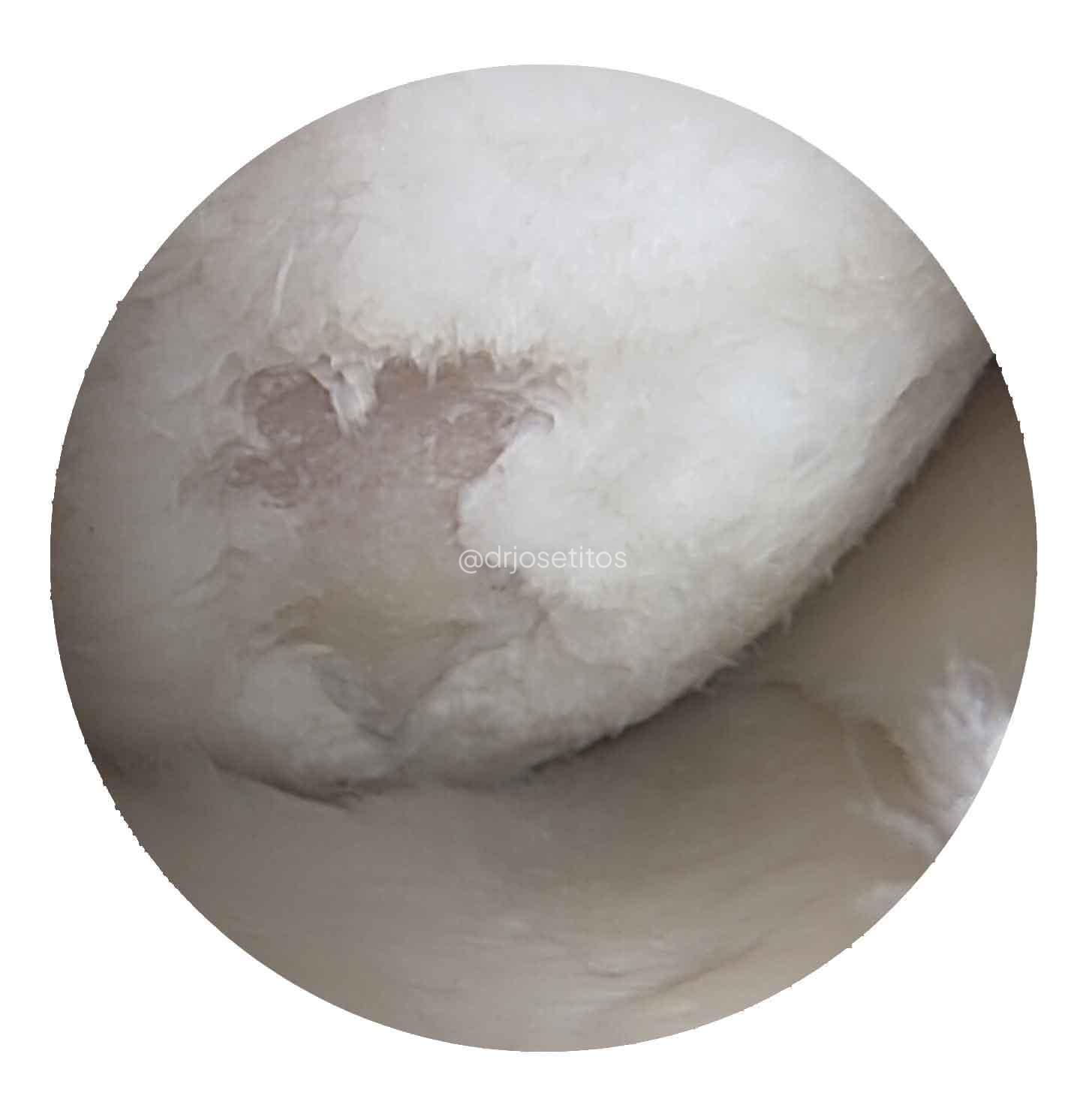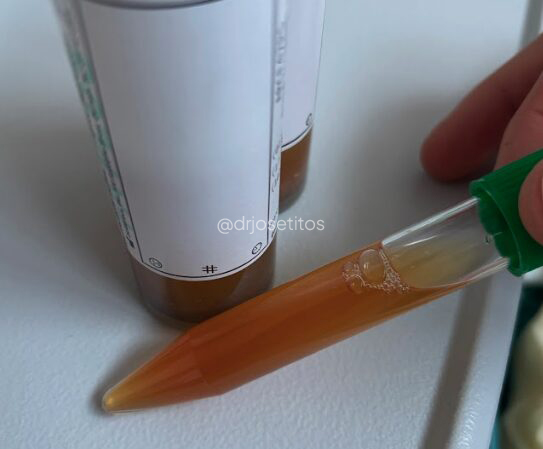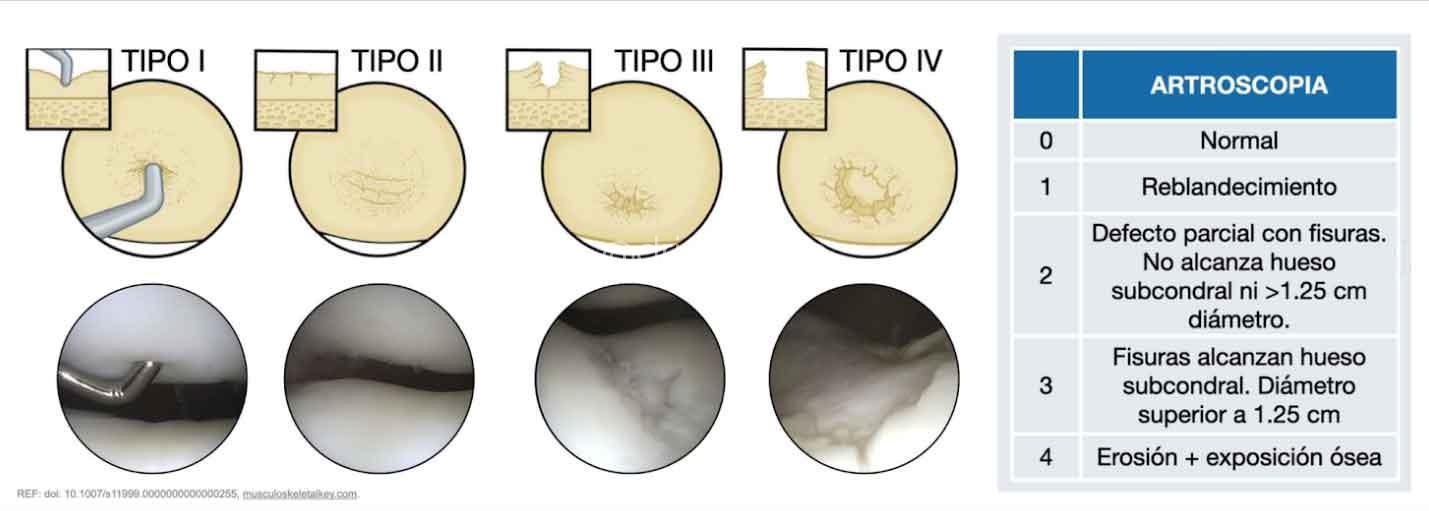TREATMENTS
Cartilage injuries
CARTILAGE INJURY IN FIGURES
%
of Chondral lesions are detected in knee arthroscopies.
%
of cartilage lesions are symptomatic from the onset.
years is the mean age of patients with symptomatic focal condylar lesions.
children under this age often present with repeated microtrauma and patellar instability.

Cartilage injuries
It is essential for proper functioning of the knee joint.
DESCRIPTION
What is knee cartilage
The articular cartilage of the knee is a specialized connective tissue that covers the articular surfaces of the knee. Covers the articular surfaces of the bones of the bones. It is located on the contact surfaces between the bones, specifically the femur, tibia and patella, and is essential for proper functioning of the knee joint.
Its main function is to to allow smooth and frictionless smooth and frictionless movement between the bones of the knee, as well as cushioning cushion and distribute the loads generated during activities such as walking or running.
It is composed mainly of chondrocytes and an extracellular matrix composed of type II collagen, proteoglycans and water, which gives it flexibility, resistance and capacity to absorb impacts.
Joint fluid
Also known as synovial fluid, it is a viscous, clear fluid found in the joint cavity of the knee and other joints in the body. This fluid has a dual primary function:
- Lubricates the joint to reduce friction between the cartilages.
- It acts as a shock absorber during movements, helping to distribute loads.

In addition, joint fluid contains hyaluronic acid, which is key to its viscosity, and plasma proteins, which contribute to cartilage nutrition. Synovial fluid is produced by the synovial membrane, which lines the inside of the joint capsule, and plays a crucial role in maintaining the health of joint tissues, facilitating their mobility and protecting against wear and tear.
This fluid also contributes to the repair of small cartilage lesions, although its regenerative capacity is limited.
Cartilage injuries
They are a common problem, especially in active people or athletes. These injuries can be traumatic (due to a blow or accident) or degenerative (associated with aging or diseases such as osteoarthritis).

Trauma
A direct blow to the knee, such as those that occur in contact sports (soccer, basketball, etc.), can damage the articular cartilage. This type of injury often involves a fracture of the cartilage.

Repetitive wear and tear
As we age, cartilage can lose its elasticity and strength, leading to degenerative injuries. Repetitive activities that put stress on the knee, such as running or jumping, can accelerate this process.

Biomechanical problems
Alterations in knee alignment (e.g., flat foot or misalignment of the femur and tibia) can cause certain areas of cartilage to wear out more quickly.
Classifications of cartilage lesions
The Outerbridge classification is one of the most commonly used to classify articular cartilage injuries in the knee, especially in terms of severity severity and degree of damage. This classification divides injuries into 4 grades:

Longitudinal rupture
It extends along the meniscus, parallel to its curvature.
Grade 1
Mild non-cracking damage (cartilage softening or chondromalacia)
Grade 2
Partial cracks and moderate wear.
Longitudinal breakage
It extends along the meniscus, parallel to its curvature.
Grade 3
Deep fissures, significantly affecting the cartilage.
Grade 4
Total cartilage destruction, with exposed bone.
TREATMENTS
Conservative therapies

Chondroprotectors
These are oral supplements designed to protect and regenerate articular cartilage. They contain substances such as glucosamine and chondroitin, which help repair cartilage and improve joint function. Although studies have shown mixed results, some patients report pain relief and improved mobility with regular use.

Infiltrations of hyaluronic acid, platelet-rich plasma (PRP) or stem cells.
They can help improve viscosity by reducing pain, or regenerate tissues such as the joint collagen membrane. These treatments are novel, useful in cases of mild to moderate osteoarthritis and may delay the need for surgery.

Physiotherapy and specific exercise
Helps strengthen the muscles around the knee and improve mobility.

Nonsteroidal anti-inflammatory drugs (NSAIDs)
To relieve pain and inflammation.

Rest and changes in activity
Avoid activities that worsen symptoms and reduce friction between the bones of the joint.
Surgical therapies
Chondral Debridement
It is used to clean and smooth the surface of the damaged cartilage. During this procedure, the surgeon uses specialized instruments to remove areas of cartilage that are defibrillated, irregular or significantly damaged (<2cm2). It is usually performed on superficial cartilage lesions.
Advantages
- It is a less invasive technique, relieves pain and improves mobility in the short term.
Disadvantages
- It does not regenerate lost cartilage, it only improves the articular surface.
Nanofractures
These are microscopic perforations in the chondral defect, just in the bone underlying the damaged cartilage. This process promotes bleeding to fill the cartilage defect with fibrocartilage, which is not exactly the same as the original cartilage, but can help reduce pain and improve joint function. It is a minimally invasive and widely used treatment, especially in smaller to moderate lesions (<2cm2). It is the evolution of microfractures.
Advantages
- Simple, minimally invasive and low cost.
Disadvantages
- Regenerated cartilage is not as durable or as functional.
Mosaicplasty (OATS = Osteochondral Autograft Transplantation Surgery)
Small cylinders of cartilage and bone are removed from uninjured areas of the same knee, usually in the superoexternal area, to be implanted in the damaged areas. This treatment is ideal for larger lesions (<4cm2) and is used when the lesion affects a large area of cartilage.
Advantages
- It offers more durable and functional regeneration than nanofractures.
Disadvantages
- More invasive surgery because it requires a good donor site.
Collagen gel or membranes (AMIC = Autologous Matrix-Induced Chondrogenesis)
It is a novel biological therapy in which a biological matrix is placed or a gel containing type II collagen, a protein important for the structure of articular cartilage, is injected. It can be combined with nanofractures. This graft serves as a scaffold that promotes cartilage regeneration, encouraging cartilage cells to grow and distribute themselves in a more orderly fashion. If chondrocytes extracted from the first surgery are added, the technique is called MACI (Matrix-Induced Autologous Chondrocyte Implantation).
Advantages
- It promotes cartilage regeneration, is non-invasive and painless.
Disadvantages
- It requires a more complex procedure and has a longer recovery time than traditional microfractures.
Cartilage Transplantation (OCA = Osteochondral allograft)
Cartilage transplantation is a more complex treatment where a bone fragment with cartilage from deceased donors (allograft) is used to replace the damaged cartilage. This option is indicated in very severe cases, especially when the injury affects a large area of cartilage (4cm2). This procedure has a longer recovery time, but in some cases, it can offer a very effective solution for patients with extensive damage.
Advantages
- May be suitable for very large or severe injuries.
Disadvantages
- Recovery time is longer and there is a risk of rejection, although this is rare.
Video rights Dr. Cory Calendine MD
If you have a cartilage injury and cannot find a solution, contact an orthopaedic surgeon who is an expert in advanced cartilage techniques.
Contact Form
Send your inquiry through our contact form.
Fill out the form below to book an appointment, make an inquiry or request more information.
I will get back to you quickly.
All fields marked with an asterisk are required fields.
